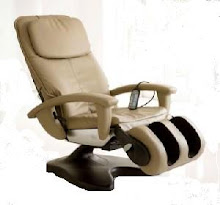The subject of this post is related to orthopedic based products, however it is perhaps more directly connected with products in the mobility and health sector. The nature of the product types that I am covering are those which have benefited from some kind of automation, power-assistance, computer technology or other technological intervention. In other words products very much connected with overcoming mobility, movement or disability, but with a modern twist.
As little as 20 or 30 years ago very few products falling into the classification of “human aids” were what could be described as technologically advanced. An obvious example is the wheelchair which, up until quite recently, had seen little in the way of advancement. Indeed the number of aids was very limited and this meant that those with any kind of limiting physical condition had to rely to a significant degree on carers or family members for help.
Things have now changed and items like wheelchairs come in powered formats and, in addition, there is a range of mobility scooters, some of which are even road worthy.
Other large body moving aids like stairlifts and bathlifts have also become very affordable and they are now common place in many homes. These large aids enable someone who has limited mobility to retain their independence for longer. They can only exist because of the advances made in miniaturising motors and developing advanced and controllable robotics.
The large aids are however only one area where advancements in technology have seen benefits.
Many small scale aids have also emerged and most of these solve the smaller, but still challenging, tasks of daily life. A good example is the can, bottle top and tin opener that requires only a single touch to activate it. This device can be a massive aid to those who find opening a tin, or screwing the top off a bottle difficult.
Technology also rears its head when it comes to measurements and providing readings. A good example of this would be a blood sugar alarm for those suffering from diabetes. These alarms use advanced sensors, digital components and audible sounds to notify the wearer that their blood sugar level has dropped to a point where action needs to be taken. Prior to these aids, regular blood tests were the only reliable warning option.
More information relating to the large number of health aids that fall into this category can be fou by looking in mobility stores and websites and there are now developments taking place on a continual basis which see new aids emerging all of the time.
New trends in aid development include features like miniaturisation and the ability to obtain very accurate readings and measurements using equipment with digital interfaces and small computer like processors.
